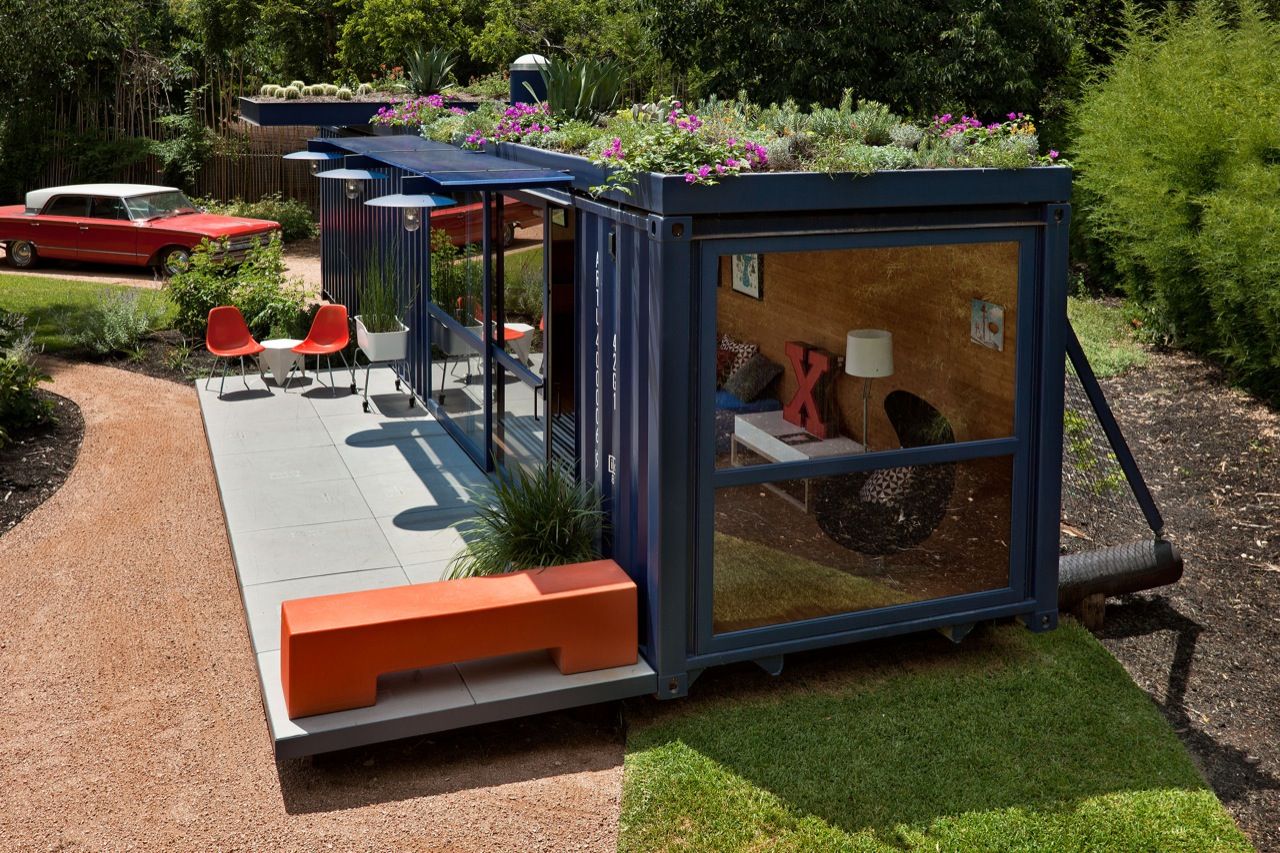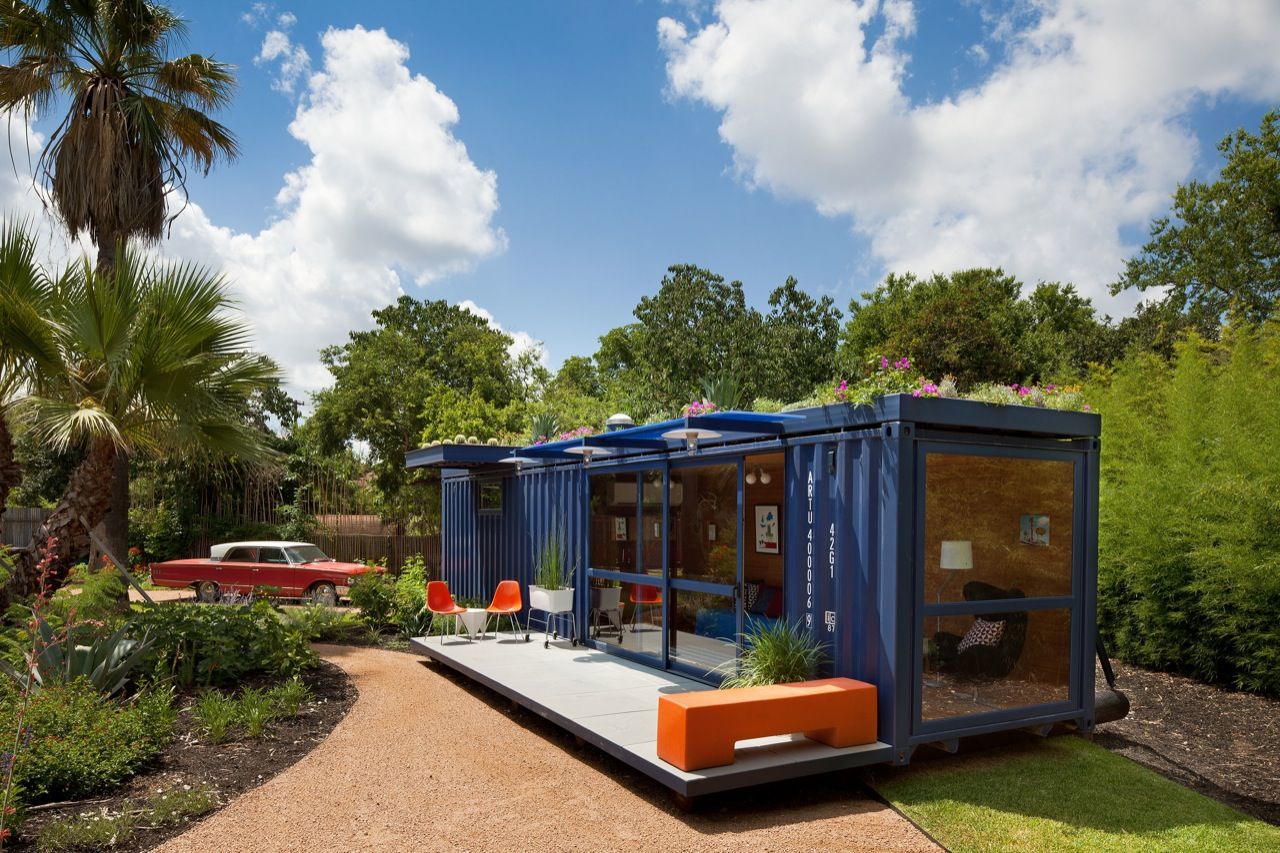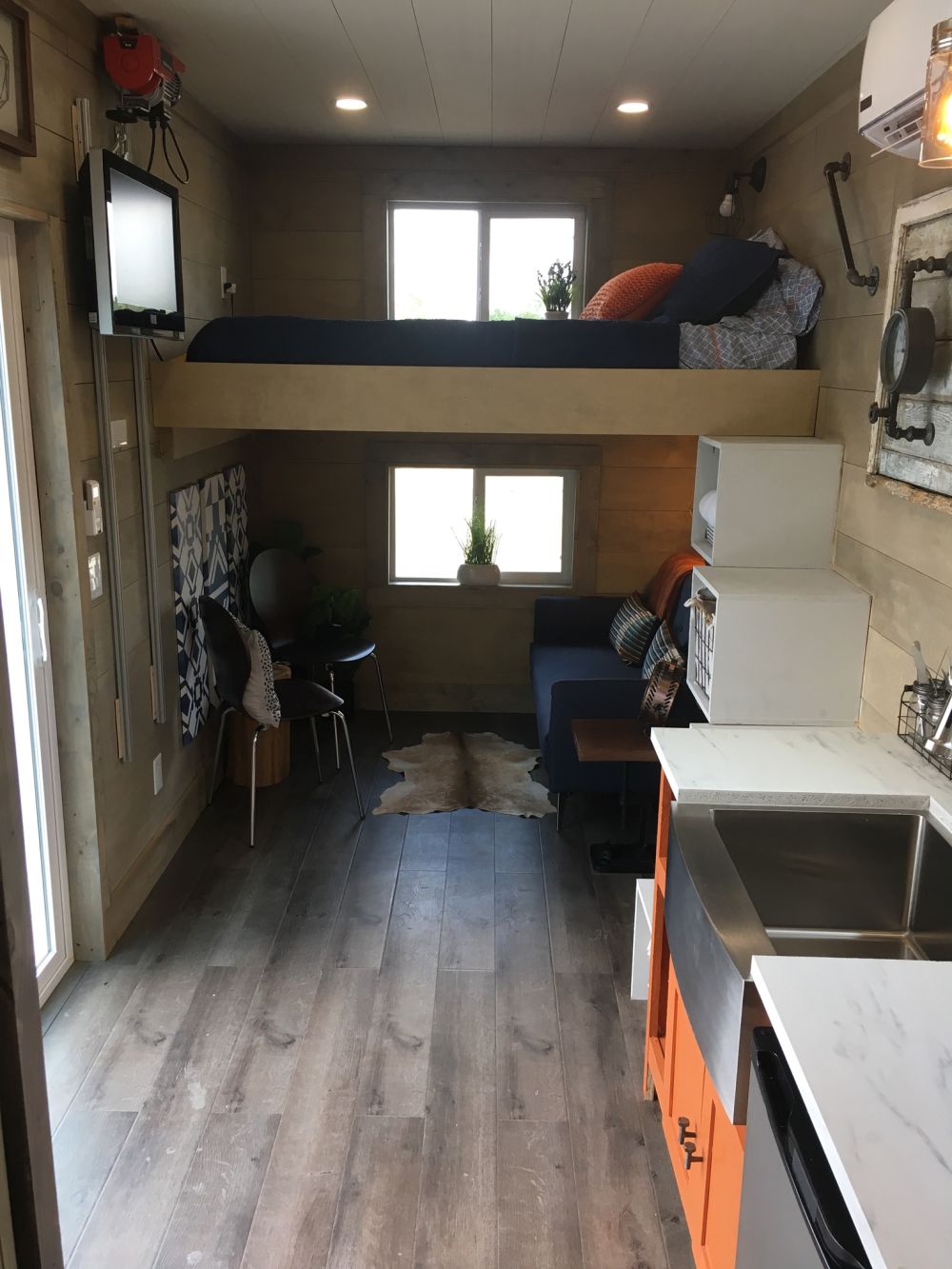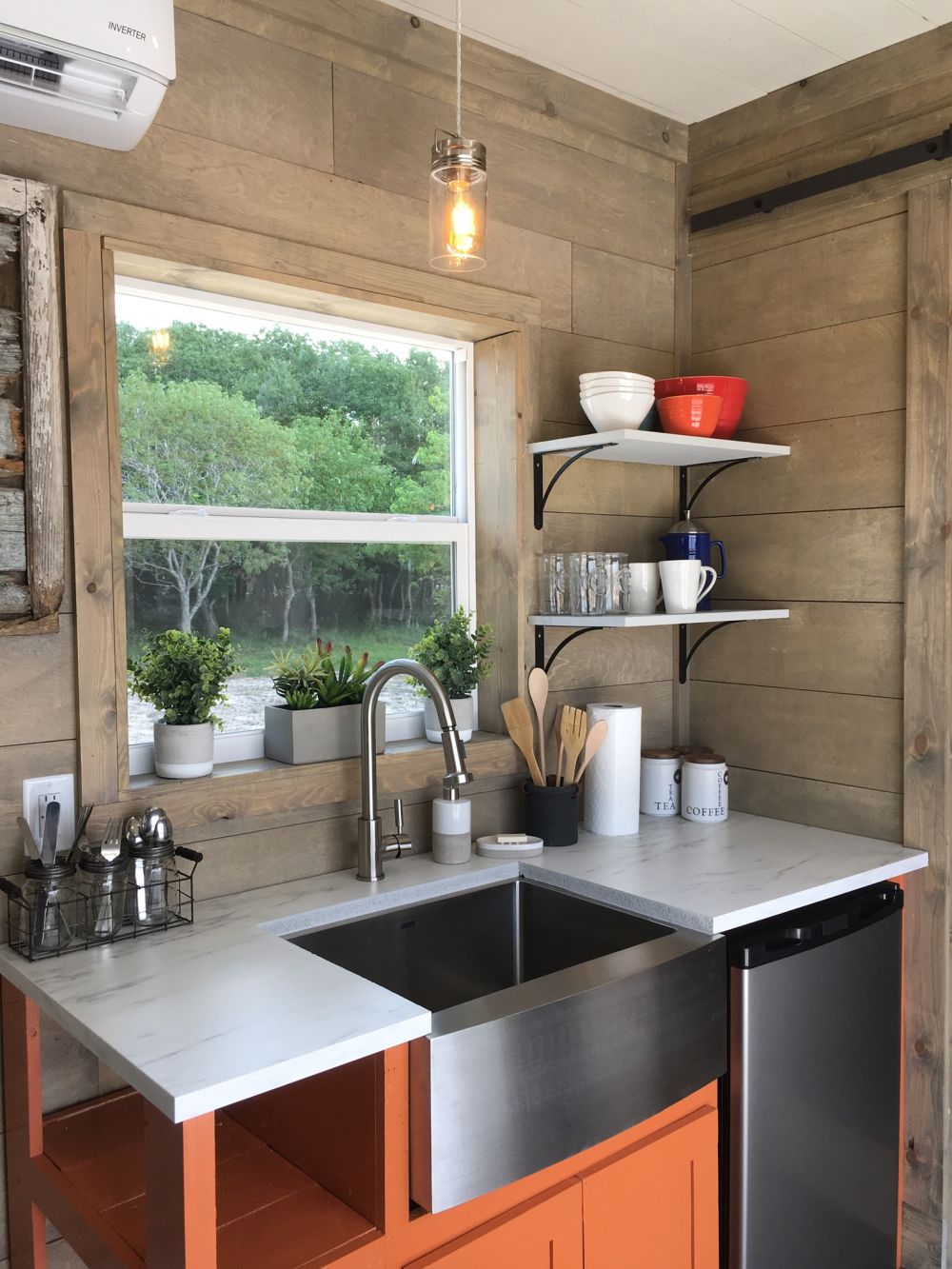Have you ever wondered what it would be like to live in a shipping container home? Similar to the tiny home craze, DIY shipping container houses are all the rage right now.
With a few modifications, anyone can have their own tiny shipping container house with everything they need. But where do you begin? We’ve got all the tips right here!
How Long Do Shipping Container Homes Last?
A shipping container home has a lifespan which is highly variable and is mostly determined by where it is placed.
However, in general, a residence constructed from old shipping containers should survive approximately 15 years without major upkeep, whereas one constructed from new containers should last approximately 25 years.
Shipping Container Costs
Although shipping container homes are not necessarily less expensive to construct than conventional stick-built homes, they can be. Numerous aspects affect the cost of a project, including its design, size, and finishes for the interior.
The cost of the container varies from $1,400 (if you decide to purchase a small container) to $6,000 (if you are looking for a 40-foot container). Containers that are newer will cost more than containers that are older.
Do You Need a Permit for Shipping Container Homes?
While shipping container homes are attractive and may complement the surrounding landscape in some areas, certain regions will not allow them.
Prior to beginning work on the shipping container, a permission should be secured. Thus, before the shipping container is erected or placed on the land, approval from the necessary authorities should be sought and granted.
In this situation, the proper authority may be the neighborhood homeowners’ organization, the local municipal government or from city council. Even in remote locations where a permit is not always required, it may not hurt to inquire prior to embarking on a project of this nature.
If the local authorities allow it, you may place a shipping container on your land. Where you are unsure of the applicable regulations, conduct research and communicate with authorized officials to educate yourself on the possibilities of placing these containers on your land.
Shipping containers offer a unique and adaptable method of constructing one’s dream home. They give a private, warm environment for one. However, there are rules that govern this type of conduct.
Local and state legislation, as well as guidelines established by the Homeowners Association, must be considered.
Shipping Container Home Insulation: What You Need to Know
When you insulate a shipping container, you are effectively separating the conditioned airspace from the ambient air. It’s the same procedure as you would with practically any enclosed facility equipped with climate control.
As previously said, insulating material assists in preventing heat moving from the warmer to the colder side. This improves your container home’s energy efficiency by reducing the energy requirement to manage the indoor temperature.
As opposed to more traditional forms of residential building, shipping container homes feature an all-steel façade. Given how well steel conducts thermal energy, it is particularly poor at maintaining a temperature differential between your airspace and the outside air. As a result, insulation is frequently required in greater quantities for shipping container homes compared to other building types.
Furthermore, shipping container homes are usually made with steel that absorbs an enormous quantity of radiant energy from the summer sun, becoming hotter than the surrounding air.
Simply put, unmodified shipping containers are excellent at preventing infiltration of outside air. They do, however, a poor job of preventing heat from passing through their walls.
However, just because container dwellings are inefficient at preventing heat transmission does not mean they require insulation. The climate is another thing to consider.
What Kind of Floors Are in Shipping Containers?
Shipping containers have been built to resist the rigors of long-distance ocean travel while also protecting the goods contained within. The floors of shipping containers are frequently made of one-inch marine plywood manufactured from tropical hardwoods. Unfortunately, these hardwoods attract a wide variety of pests.
To prevent insect damage, the wooden floors are sprayed with pesticides. While this is a reasonable method of carrying things, it is unsafe when employing containers to construct a home. These severe insecticides are toxic to humans, particularly kids, and should not be used in shipping container dwellings.
The good news is that a number of highly toxic pesticides have been banned or severely limited. Other insecticides, on the other hand, are still applied on practically all container flooring.
Shipping Container Home Bathroom Water Tank: What You Need to Know
When planning your shipping container home, the designs should include paths and connections designed for the waterline. They are almost certainly going to be positioned towards the back of the home, underground, to protect it from damage.
Most engineers will employ PVC tubing to contain incoming and departing water for plumbing needs. While shipping containers might not allow you to install a heater, with the addition of a solar panel, the water can be heated to a suitable temperature for use.
You have to keep in mind your plumbing port’s location: the points at which the container will connect to the sewage line or the water tank. This is one of the design’s most critical logistical considerations. The location of the plumbing ports will dictate how and where the container bathroom can be placed on-site.
3 Roof Types for Shipping Container Homes
When it comes to choosing a roof type for your container home, you have the possibility to select between three different options.
How Thick Is a Roof on Container Homes?
It really depends on the manufacturing brand. For example, certain containers that have a roof panel are formed from 2.0 mm thick die-stamped steel sheets with a smooth upward camber of approximately 6.0mm that are welded together to create one panel.
1. Flat
Containers have standard flat roofing, and most people are just happy leaving it that way. This is the most cost-efficient option, but there is a risk of water pooling.
2. Gable
Gable-style roofs have a specific triangular shape, kind of what you see in most regular homes. This is the most durable design because it keeps the roof of the container protected because of the slopes. It does require ventilation and installing either steel sheets or singles.
3. Shed
Shed roofing is mildly sloping and is extremely affordable and quick to construct. This layout is popular because it’s easy to install solar panels on the roof, which helps boost energy savings.
Container Home vs. Tiny Home
Ease of construction
If the speed with which you build your home is critical to you, you are probably considering the option of purchasing a prefab home. Additionally, container dwellings enable rapid building.
Installation of prefab homes is nearly rapid, as the majority of the home is constructed in a factory. The home is then delivered to your property and assembled. The duration of building will be determined by the size of the home you desire.
If you’re building a tiny house, the construction process will be significantly faster if you choose a prefab home over an ordinary home.
Construction of container homes will usually take longer. To begin, you’ll need to carve out room for windows and doors that are structurally sound.
Additionally, you will need to make the home utility ready. To maintain a container home’s comfort level in extreme weather conditions, seamless insulation is required to prevent warm or cooled air from escaping.
Insulation properties
Tiny homes are scaled-down copies of traditional dwellings. All of the elements, including insulation and ventilation, will be included in the home, regardless of whether it is a custom-built home or a prefabricated home.
In both hot and cold areas, little dwellings are often the better alternative. These dwellings will not require the extensive adaptations that container homes will require simply to maintain a pleasant interior temperature.
One criticism leveled with container homes is that the metal frame is inherently more difficult to cool and heat. Metal is an inefficient insulator, allowing heat transfer to proceed nearly unimpeded. Outside radiant heat transmission is a hazard for shipping containers in particular.
Recycled materials
Numerous homeowners desire to own a home that is primarily constructed of recycled materials. Container dwellings have an advantage over tiny homes in this regard.
Typically, it is far more difficult to construct a compact house constructed entirely of recycled materials. You’d need to ensure that every component is produced entirely of recycled materials.
With container homes, the majority of the building will be made of repurposed metal containers that will spend the remainder of their lives as your home.
Container Home vs. Modular Home
Cost
Perhaps the most critical distinction between these two types of housings is in terms of price. There are no cost-cutting measures available here: both solutions are prohibitively expensive. Neither is as expensive as building a stick house, but they both require a significant investment to get started.
While building a shipping container home yourself may need a lesser initial expenditure, it is not less expensive in the long run. The expense of interior work, plumbing, and other necessary renovations to turn a container into a home is comparable to (and frequently exceeds) the cost of a mobile home.
Energy efficiency
A notable distinction between mobile houses and shipping container homes is the energy efficiency of the former. Rumor has it that shipping containers are more environmentally friendly than other types of construction since they are recyclable, require fewer building materials, and tend to conserve energy.
In reality, it is dependent on the manner in which the home is constructed. You can convert a container home to solar electricity far more easily than you can a stick home. If you want to conserve energy, you’ll need to adequately insulate the shipping container.
10 Shipping Container Homes With A Save Spacing Layout
1. Eco-friendly container home prototype
One of the most inspiring projects related to storage container homes was a collaboration between Cocoon Modules, an company based in Athens, Greece and Coco-Mat, a producer of high-quality mattresses.
Together these two companies came up with a plan: to design and build a prototype home which is easy to built, cheaper than the overage prefabricated structure, modular and tailored to respond to the user’s need for comfort, privacy and beauty.
The container home that resulted from this is modern and stylish, with a bright and open interior, has a sustainable construction and is furnished with eco-friendly pieces. Further more, it can be transported to just about any site.
The project promotes environmental design in general but also aims to respond to the specific needs of the modern day nomad. There are numerous possible uses for such a structure. Inside there’s a bathroom, a social area with sliding glass doors and a sleeping area.
2. The Container Guest House designed by Poteet Architects
The Container Guest house is exactly what the name of the project suggests. It was designed and built by Poteet Architects for a client who lived in San Antonio, US, in a house situated on a former industrial site.
The client was curious and excited about experimenting with shipping containers so the architects tried to keep the design of this new guest house as authentic as possible.
One of the main goals of the project was to build a sustainable structure which is why the client chose to recycle a container in the first place. The transformation is spectacular.The guest house has large windows and sliding glass doors which ensure a close connection between the interior space and the immediate surroundings, in this case the garden. A deck acts as a connector between these two areas.
The green roof is a really cool feature. It helps this shipping container module to blend in with its lush surroundings. Another nice design feature is the spray foam insulation lined with bamboo plywood. Moreover, we love the fact that the container has this steely blue exterior which helps it maintain its industrial appearance.
3. The RDP House designed by Daniel Moreno Flores
Of course, you don’t have to limit yourself to only one container. The RDP House which was designed by architect Daniel Moreno Flores in collaboration with Sebastian Calero is definitely quite complex for a shipping container home.
It was built out of seven 20-foot containers plus one 40-foot container. The architects and their clients agreed to preserve the worn and weathered appearance of the containers in order to simplify the design and to give the house an industrial appearance.
The project was quite complex but still easier and quicker than building a traditional house. There were four construction phases in total. First the concrete foundations were poured and then the shipping containers were positioned.
The third phase involved installing steal beams between the containers which were meant to support the roof system. Finally, a series of pulleys and tensile cables were installed and their role was to support the secondary roof systems and the glass walls which connect the containers. So you see, container home floor plans and everything related can be complex too.
4. A modern shipping container home made of reclaimed materials
Living off the grid doesn’t have to mean a lack of style or comfort and one of the greatest things about shipping container homes is that they facilitate and encourage the idea of having the freedom to live anywhere and being able to do it in style.
Architect and builder TY Kelley built his own container home and did a wonderful job at making it look sleek and modern. The house is pretty small but has a lot of character.
It has a one-bedroom, one-bathroom floor plan, it has a glazed back facade and it has a lot of handmade features and cool details in its design, including an outdoor shower, a wood stove and a vibrant color palette.
5. Container home with a tiny golf course on its roof
When you have this freedom to actually get involved in the design of your shipping container floor plan and to basically place the structure anywhere you want, you can get pretty creative with the details.
For example, Backcountry Containers designed this really cool shipping container home which can also be used as a workshop and which has a small roof terrace with a really tiny gold course on it.
Of course, there’s a lot more to it. The interior is planned in a way that maximizes the space and allows a lot of functions and features to be packed in a very small area.
6. A shipping container studio ready in eight weeks
The first prototype of the container house designed by MB Architecture was completed in 2009. It was an artist’s studio located in Amagansett, New York. The studio was built out of four shipping containers and was called the Insta_House.
It has two bedrooms, two bathrooms, a full kitchen and a living room and it only took eight weeks to fabricate the whole structure and another day to install it on site. The project received the American Institute of Architects Peconic Chapter Honor Award for Architecture. Now structures just like this one can be purchased and installed everywhere in the US.
7. L-shaped container home designed by James & Mau
In 2010 James & Mau completed a shipping container house with a 190 square meter L-shaped floor plan. The house is divided into two volumes.
The ground floor houses the living area and open kitchen and the home office and bedroom suite are on the upper level. Both volumes are very welcoming and have stylish and modern interior designs and decors.
There’s a pretty big contrast between the interior and exterior designs of this container home. The outside has a strong industrial vibe while the interior doesn’t really suggest this style in any way. Further more, the chromatic palette is intriguing too. The exterior of the house is blue and has the typical worn look of shipping containers. The ground floor volumes has glazed surfaces and is open towards the views and the surroundings and the upper floor is more private and has small and horizontal windows.
8. Off-the-grid container home with mountain views
In the case of the project completed by Studio H:T the views are pretty amazing but the house is not too shabby either. In fact, these elements are in perfect sync and complement each other perfectly.
The building features two shipping container volumes, one on each side of a taller volume which houses the common areas plus a loft space above them. The central volume has solar panels on top which provide electricity, highlighting the eco-friendly and sustainable character of this whole project.
9. A container house built around a cedar tree
In Escazu, Costa Rica there’s this rather unusual house designed by María José Trejos. There are several interesting things about this project. First of all, the house is built out of reclaimed shipping containers but that was easy to assume given the theme of our article.
Another unusual element is that cedar tree which grows right through the deck. This happens because the house was actually built around this tree and its design was planned so that there’s a view of the tree from every room.
Special importance was given to the materials used throughout the project. The main goal was to ensure a minimal environmental impact and that had as much to do with the design as it did with the materials and the energy-savign systems implemented throughout. The focus was on renewable, reusable and recyclable materials, hence the choice of using containers. They also had to be durable and low-maintenance. The house features wood surfaces, concrete floors as well as a series of bamboo accents. Moreover, there’s a rainwater harvesting system used for irrigation and solar panels are installed on the roof of the house.
10. The Containment woodsy retreat
If you’re curious to experiment living in a storage container home just to get the feel of it, you could rent out the Containment house which is situated in Saugerties, New York. It’s a charming little cabin housed inside a shipping container.
Inside there’s a lounge area with a wood stove and a comfortable sofa bed, a kitchenette with all the basic appliances and features and a lot of cool features such as a writing desk, a record player, a yoga platform, a hot tub and there’s even a hammock and a fire pit outside. You can rent this through Aibnb.
FAQ
Can You Insure a Shipping Container Home?
The first thing that you need to know about shipping container home insurance is that it is similar to that of a normal home. You’ll want to make sure that your policy provides adequate coverage for your home and contents.
If the shipping container is located in a residential zone, you can insure it under a homeowner’s policy. It must adhere to all applicable norms and regulations and possess all necessary permissions.
Additionally, it must be securely secured to the ground by a foundation. Otherwise, it may be classified as a mobile house.
Personal property coverage extends to things that are not considered a part of the container’s structure. In other words, this type of insurance protects your personal belongings.
Your homeowner insurance policy includes liability coverage. It covers you for any damage or injuries you cause, including property damage or bodily injuries. It covers lawsuits, medical expenditures, damage to other people’s property, and bodily injury.
The post 10 Amazing Shipping Container Homes Around The World appeared first on Home Decorating Trends - Homedit.








































































































0 Commentaires